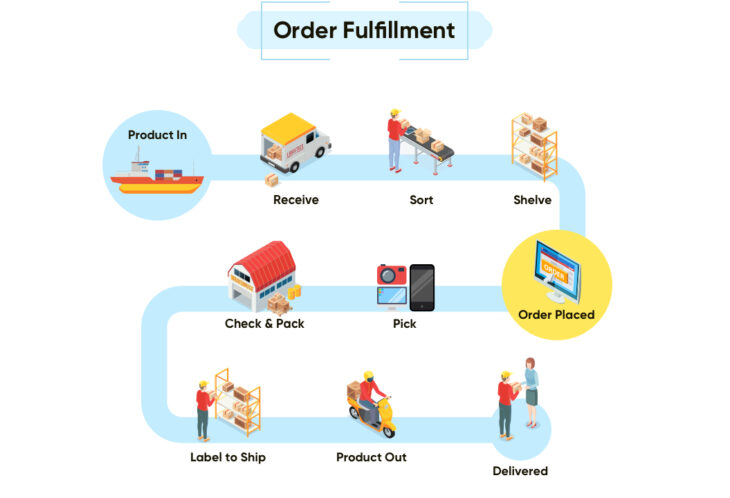When we work on a project, we often encounter problems such as non-transparency and inefficiency. That is why we use certain tools that can be extremely useful to us. One such tool is a flowchart. A flowchart is a tool applicable in many spheres and when performing various tasks. Therefore, we will introduce you to several types of flowcharts and their application in practice.
Contents
Significance Of Flowchart
Flowcharts are extremely meaningful elements in project management – since they can improve workflow efficiency and make things clearer and more evident. A flowchart will not only help us envision all kinds of procedures and workflows on the project – but it will also provide us with a common language that enhances team orientation and communication. The advantage of such a tool is also in showing you the actions involved in the project – including determination points, similar routes, branching loops, and execution order.
The elements involved in a flowchart are a series of activities or decisions that must be made, then the people involved in the task, and so on. Therefore, a flowchart significantly helps us in performing tasks – especially in the planning stages. In this sense, the flowchart is significant because it will make us easier for us to perform a certain task, going step by step.
Purpose Of Using A Flowchart

Source: examplespedia.com
The purpose of any process map is to help us visualize the necessary steps – especially those that are important to the project management process. That way, we can facilitate insight into how one step in your process leads to another. The goal of a flowchart is to achieve clearness and transparency of all actions, procedures, and the project as an entire entity. If you use a flowchart to visually demonstrate your project, you can show the parts of actions needed for a successful task – but also highlight possible problems during the work. What is perhaps best about flowcharts is the fact that you can upgrade them throughout the task process.
Different Types Of Flowcharts
Due to their diverse properties, diagrams are widely used in so many areas of work. Each flowchart shows all the steps in a procedure of performing a certain task. That way, the flowchart greatly facilitates the performance of the task and visually represents its development. Considering different tasks and needs, there are also different types of flowcharts. Therefore, we will introduce you to some of them below – and show you how you can use them.
1. Process flowchart

Source: examplespedia.com
This type of flowchart can also be marked as a universal type – because such a flowchart can be applied to all jobs and tasks. Namely, you can use it, for example, in the development mapping of certain tasks. Also, it is very useful in team or work management. For example, we can use it for delegating employees according to their roles in a particular business process. What is very important is that this flowchart model can be very handy for tasks where certain decisions change on the run.
2. Engineering flowchart
Industrial jobs and tasks often consist of a large number of steps that must be taken – as well as several devices or tools used in the procedure. To make our work easier and make sure that we do not skip any phase or utilize a certain machine and tools – we use an engineering flowchart that will visually help us keep track of the sequence of actions we have to perform. According to Zenflowchart, this type of flowchart greatly simplifies things – that even those who do not meet the required academic qualifications can easily understand the entire process. The flowchart in engineering can serve us well in manufacturing, construction, or similar project tasks.
3. Decision-making flowcharts

Source: brixx.com
This is a very commonly used type of flowchart. It is very often used in companies when making important decisions that involve several team members. With this type of diagram, you have the chance to analyze all aspects and factors in the business – before making an important decision. Also, by following all the stages and grades of such a flowchart, you can identify mistakes made or potential ones – which will help you significantly in making conclusions.
4. Data flowchart
When you need to understand how certain data is processed within a system – this sort of flowchart is something that will be useful to you. Although it is universal, just like a process flowchart – it is most often used in informatics and software design. With this type of diagram, by using different symbols, you can very easily display a lot of information – as well as analyze the movement of this information during a certain time interval.
5. Workflow flowchart

Source: brixx.com
It is already clear from the very name of this type of flowchart that it is mostly used as an overview of how a business organization works. The essence of such a presentation is to explain in simplified steps a set of business tasks that are performed on a daily basis. Also, with the help of such a flowchart, we can analyze different parts of the organization individually – or determine the existence of certain problems (if there are any). Also, we can enter new data such as new employees who take on responsibilities within a particular business task.
Conclusion
We have seen that flowcharts can be applied in different industries and when performing different tasks. This also explains the existence of different types of flowcharts. Whatever type of flowcharts you use – it will make your job much easier. First of all, the use of a flowchart allows you to accurately define all the essential elements in the workflow. Making flowcharts is actually “putting on paper” all this necessary information. When the necessary information in the preparing process is collected and researched – it can then be directly applied in the work and precisely defined. Therefore, a flowchart aims to provide an accurate sequence of work processes – while defining all the necessary operations that we need to do for the task to be complete and well performed.
